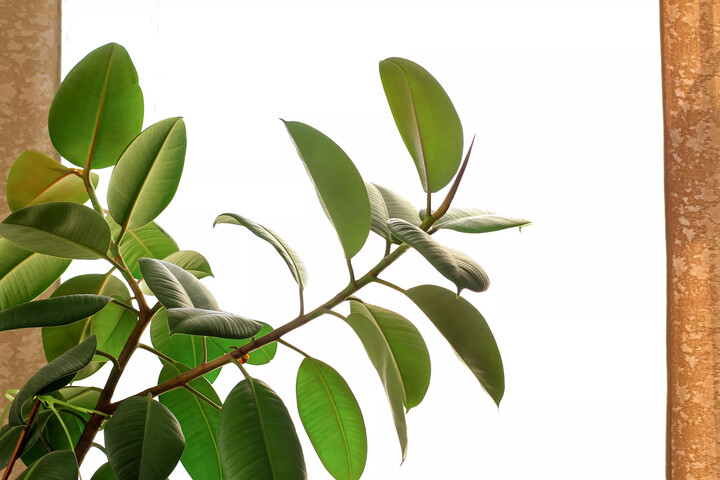Native to the tropical regions of Southeast Asia, rubber trees (Ficus elastica) can be readily propagated by stem or leaf cuttings. These easy-to-grow houseplants are just as easy to propagate and have a high rate of success. All you need are a few tools and supplies that you probably already have laying around the house, and some patience!
These tropical plants can grow up to 100 feet tall when gro wn outdoors in their ideal conditions. However, when grown indoors as houseplants, rubber trees are usually kept much smaller through regular pruning. Pruning rubber trees not only helps to control their size and create new plants, but it is also a great way to shape the trees to your desire. Every time a stem is cut it encourages branching, which eventually leads to a fuller-looking plant.
As with most plants, rubber trees are best propagated in the early spring to late summer, in accordance with their active growing period. Plants that are propagated in the fall or winter may not grow or recover as quickly, although it can still be done.
With a few simple tools and supplies, learn how you can create a new rubber tree by taking cuttings from your existing plant!

What You'll Need
Equipment / Tools
Sharp pruning shears or scissors
Protective gloves
Materials
Perlite
Potting soil
Small plastic pot
Rooting hormone
Large zip top plastic bag
Instructions
1.Prepare a Clean Surface Area
Propagating rubber trees can get messy since they ooze a sticky, latex-rich white sap when the stems are cut, so preparing a clean surface area ahead of time is important. Wearing protective gloves while taking cuttings from a rubber tree is encouraged as the sap can cause skin irritation on contact. Ensure that you have all of your tools and supplies ready to go before starting to propagate.
2.Choose Where You Will Take the Cutting
Survey your plant to identify where it could benefit from some pruning. Look for areas that are uneven, or for spots that you would like fuller growth. Leggy, elongated stems or branches also make great options for cuttings.
Before you make any cuts, ensure that you identify the leaf nodes along the stem as this is where the new roots will eventually grow. Rubber tree cuttings should be about 6 inches (15 centimeters) long and have at least 4 leaf nodes for the best chance of success.
3.Make the Cuts
Once you have chosen where you will take the cutting from your rubber tree, take your sharp scissors or pruning shears and make a swift, diagonal cut directly under the lowest leaf node of the new cutting. If the cutting is dripping sap, gently pat the cut end of the stem with a paper towel until it stops.
4.Prepare the Cuttings
Once the cuttings have been taken, remove the bottom leaves from each stem - ensuring that 2-3 leaves are remaining at the top of the cuttings. Not only does this help to expose the stem and encourage rooting, but it also helps to ensure that the cutting's energy is directed towards new growth rather than maintaining existing leaves.
5.Plant the Cuttings
Fill the small plastic pot with a 50/50 mix of potting soil and perlite and moisten with a spray bottle. Before planting, apply a rooting hormone to the end of each cutting. Then, poke a small hole in the center of the potting medium and push the cutting in, ensuring that the exposed nodes are covered by soil. Pat the soil firmly down around the cutting to secure it in place.
Place a plastic zip-top bag over each potted cutting to create a greenhouse-like environment. Rubber tree cuttings require humid environments to sprout roots.
6.Place in a Warm, Sunny Location, and Wait!
Place the cuttings, including the bags, in a warm location that receives dappled sun throughout the day. Avoid direct sun as it will burn the leaves and cause the cuttings to shrivel up and dry out.
After 4-5 weeks, the cutting should begin establishing roots. You can give the cutting a gentle tug to check if roots have developed. If you feel resistance then the roots have begun to form!
Rubber tree cuttings can also be propagated in water rather than soil, although it tends to be less reliable, as the cuttings are more susceptible to rot. After 5-6 months, the cuttings should have well-established root systems.